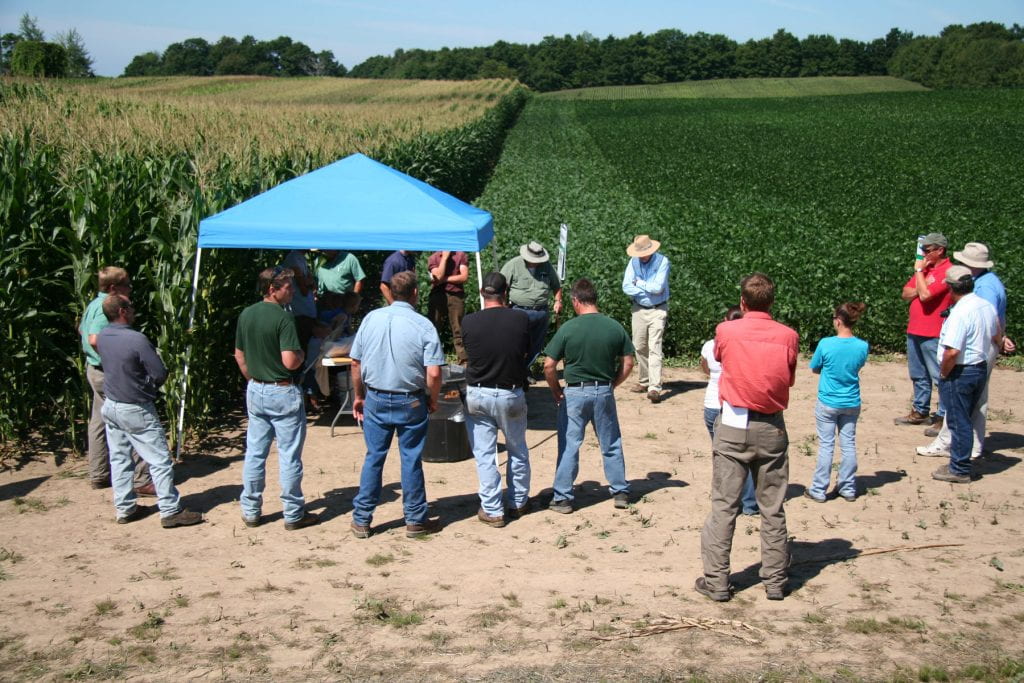
To help Northern New York farmers be alert to newly emerging field crop diseases and trends, the farmer-driven Northern New York Agricultural Development Program funds an annual field crop diagnosis and assessment project. The data produced by the survey is critical to farmers locally and statewide.
The annual evaluations, revived in 2013, provide farmers with real-time alerts in the current growing season, and add to multi-year data tracking that identifies trends and indicates emerging and re-emerging challenges.
“Northern New York farmers are increasingly faced with important management decisions that require real-time knowledge of plant diseases. The regional survey provides data to help them select crop varieties with disease-resistance and plan management practices to most cost-effectively and efficiently respond to the current-day threats and year-to-year variability,” says project leader Michael E. Hunter, a Cornell University Cooperative Extension Regional Field Crops Specialist.
Hunter and Cornell University Cooperative Extension Regional Field Crops and Soils Specialist Kitty O’Neil collaborate with Cornell University Plant Pathologist Gary Bergstrom, Ph.D. to respectively detect potential issues and collect crop samples in the fields, and analyze them at the Bergstrom Lab at Cornell University in Ithaca, N.Y.
Thirty-two farms located across the six-county Northern New York region that includes Clinton, Essex, Franklin, Jefferson, Lewis and St. Lawrence counties participated in the most recently-completed survey.
The NNYADP-funded survey also includes 19 sentinel cornfields and 18 sentinel fields of soybean, chosen to maximize the diversity of environments and cropping practices that can impact disease potential. In 2018, across the NNY survey area, seven corn diseases and six soybean diseases in total were identified and diagnosed.
“We are seeing an increasing number of growers using an integrated approach to managing field crop diseases on their farms. There are growers that are now paying closer attention to disease-resistant crop varieties, crop rotations, tillage practices, soil fertility management and fungicide selection based on the crop diseases identified in this regional survey,” Hunter notes.
The results of the 2019 field crops disease diagnosis and assessment survey will be posted on the Northern New York Agricultural Development Program website at www.nnyagdev.org and disseminated to growers, crop consultants, agribusiness and extension field crops educators at crop meetings and field days locally and statewide.
Funding for the Northern New York Agricultural Development Program is supported by the New York State Legislature and administered by the New York State Department of Agriculture and Markets.

